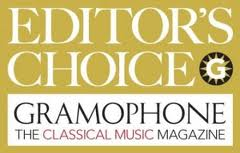Semiramide, La Signora regale

For Verdi it was King Lear, an opera that was never written, despite the composer’s
obsession with the subject. And for Strauss it was Semiramis, a project which he first
discussed with Hofmannsthal and tried to revive with later librettists. The deeds of
the semi-legendary Assyrian queen fascinated composers from Vinci (1729) to Rossini (1823).
There were two distinct strands. In Metastasio’s Semiramide riconosciuta (‘Semiramis recognised’),
the queen is ruling disguised as her son (don’t ask); she hopes to win back Scitalce, her first
love, and does so. Another plot, including Rossini’s (based on Voltaire), has Semiramis guilty of
murdering her husband and unknowingly falling in love with her son, who stabs her in error (don’t ask, I said).
This lovely recital draws on both stories.
Vinci’s was the first setting of Metastasio’s libretto: an aria is included here, as pillaged by Handel for his
pasticcio of 1733. More impressive is the accompanied recitative and aria from the first of Jommelli’s three
versions (1742) as Semiramis rages at Scitalce for spurning her. There are two examples from 1765: a leisurely,
tender number by Bernasconi and a joyous metaphor aria (the shepherd, the helmsman) by Traetta. The latter
features a solo violin and remarkably allows for two cadenzas in the A section: one vocal, one instrumental.
Meyerbeer (1819) introduces a harp as the queen welcomes her guests. Both obbligatos (Luca Giardini and,
on an 1824 Erard, Elena Spotti) are beautifully played.
Each disc opens with an orchestral piece: a three-part Introduzione by Caldara (1725) and a Gluckian
Sinfonia by Bianchi (1790). The first disc continues with arias by Caldara and Porpora (1724). There is much
coloratura and here, as elsewhere, Anna Bonitatibus is spot-on. The Rossini is an early version of Semiramis’s
cavatina: an extended ‘Bel raggio lusinghier’, orchestrated by Philip Gossett, and no ‘Dolce pensiero’ cabaletta.
Nasolini’s opera was staged in 1792, the scene here listed as having been performed in Naples in 1815. The notes
say only that it has ‘some Rossinian features’. The fact that Rossini moved to Naples in 1815 and that the aria
anticipates the Rosina-Figaro duet in The Barber (or echoes Fanny’s aria in La cambiale di matrimonio) suggests
that the composer was the great man himself; and Nasolini’s presumed death circa 1798, while not conclusive,
certainly gives one pause. This set, sumptuously illustrated, is an absolute must-have.